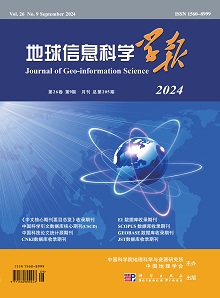The Tendency and its Spatial Pattern of Grassland Changes in the East Xilin Gol from 1975 to 2009: The Tendency and its Spatial Pattern of Grassland Changes in the East Xilin Gol from 1975 to 2009
引用次数: 9
Abstract
Using remote sensing images including MSS images in the middle and late 1970s,TM images in 1990,2000,2005 and HJ-1 images in 2009,the grassland changes database in eastern Xilin Gol League(East Ujimqin Banner,West Ujimqin Banner and Xilinhot City) including grassland current situation data for five periods was firstly developed,and then a grassland change classification system was established based on these images and regional geographic principle.Then,supported by GIS,the temporal and spatial distribution pattern of grassland changes in eastern Xilin Gol was analyzed deeply.The main results include: the grassland in eastern Xilin Gol existed a long-term degradation process during the period from 1975 to 2009.The year of 2000 is a breaking point: before the year of 2000,grassland change in eastern Xilin Gol was in an accelerated degradation process,and the percentage of degradation area climbed.During 1975-2000,the strength and range of the grassland degradation reached the most serious and intensive peak;after the year of 2000,although the degraded ared was larger than those improved,the deference between them was narrowed and the whole changed area was reduced;the speed and space range was reduced obviously,and the previous accelerated degradation process was contained.Judging from the spatial distribution,as the main degradation type,grassland fragmentation and coverage reduction expanded from Xilinhot to East Ujimqin and West Ujimqin before 2000,and then shrinked to Xilinhot from East Ujimqin and West Ujimqin after 2000.The other type of grassland change,i.e.improved grasses,showed a similar spatial distribution pattern with those of grassland fragmentation and coverage reduction.1975 - 2009年锡林郭勒盟东部草地变化趋势及其空间格局——1975 - 2009年锡林郭勒盟东部草地变化趋势及其空间格局
利用20世纪70年代中后期的MSS影像、1990年、2000年、2005年的TM影像和2009年的HJ-1影像,构建了锡林郭勒盟东部(东乌金沁旗、西乌金沁旗和锡林浩特市)5个时期的草地现状数据数据库,并基于这些影像和区域地理原理建立了草地变化分类体系。在GIS的支持下,深入分析了锡林郭勒盟东部草地变化的时空分布格局。研究结果表明:1975 - 2009年锡林郭勒盟东部草地存在一个长期的退化过程;2000年是一个转折点:2000年以前,锡林郭勒盟东部草地变化处于加速退化过程中,退化面积比例不断攀升。1975-2000年,草地退化强度和范围达到最严重、最密集的峰值,2000年以后,草地退化面积虽大于改善面积,但差异缩小,整体变化面积减小,退化速度和空间范围明显减小,原有的加速退化过程得到遏制。从空间分布上看,草地破碎化和覆盖度减少是主要的退化类型,2000年以前从锡林浩特向东乌金沁和西乌金沁扩展,2000年以后从东乌金沁和西乌金沁收缩到锡林浩特。另一种类型的草地发生变化,即改良草地的空间分布格局与草地破碎化、盖度降低的空间分布格局相似。
本文章由计算机程序翻译,如有差异,请以英文原文为准。
求助全文
约1分钟内获得全文
求助全文
来源期刊
CiteScore
2.70
自引率
0.00%
发文量
3757
期刊介绍:
Journal of Geo-Information Science is an academic journal under the supervision of Chinese Academy of Sciences, jointly sponsored by Institute of Geographic Sciences and Resources, Chinese Academy of Sciences and Chinese Geographical Society, and also co-sponsored by State Key Laboratory of Resource and Environmental Information System, Key Laboratory of Virtual Geographic Environment of Ministry of Education and Key Laboratory of 3D Information Acquisition and Application of Ministry of Education. Founded in 1996, it is openly circulated in the form of a monthly magazine.
Journal of Geoinformation Science focuses on publishing academic papers with geographic system information flow as the main research object, covering research topics such as geographic information cognitive theory, geospatial big data mining, geospatial intelligent analysis, etc., and pays special attention to the innovative results of theoretical methods in geoinformation science. The journal is aimed at scientific researchers, engineers and decision makers in the fields of cartography and GIS, remote sensing science, surveying and mapping science and technology. It is a core journal of China Science Citation Database (CSCD), a core journal of Chinese science and technology, a national Chinese core journal in domestic and international databases, and it is included in international databases, such as EI Compendex, Geobase, and Scopus.

 求助内容:
求助内容: 应助结果提醒方式:
应助结果提醒方式:


